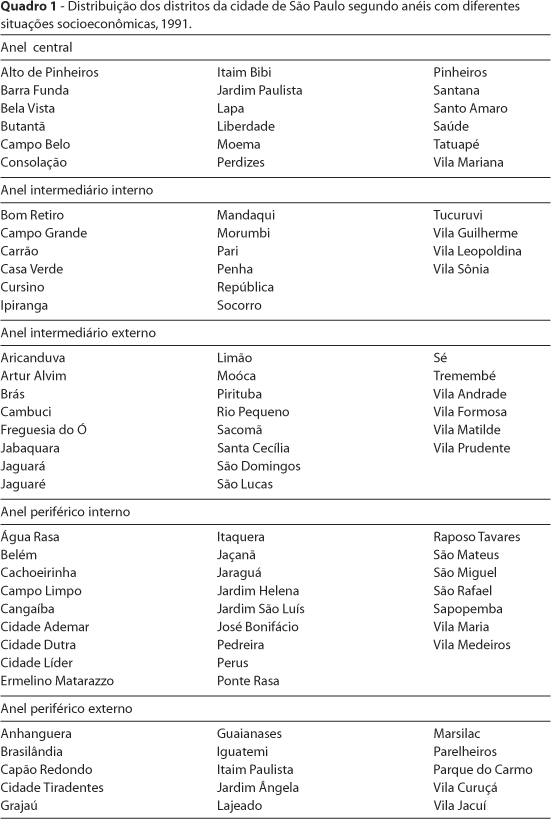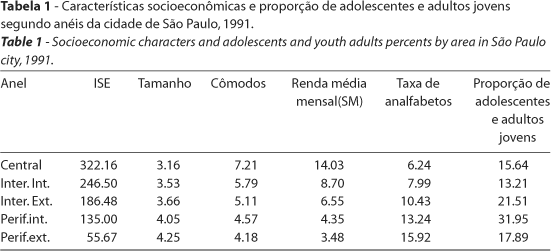Analysis of the correlation between homicide rates by gender for adolescents (10-19 years) and young adults (20 to 39 years) in São Paulo, 1995, and areas defined according to a socioeconomic indicator. The 96 districts of the city of São Paulo were grouped into 5 clusters according to a socioeconomic index constructed by adding up classifications given to variables: average monthly income of head of family, illiteracy rate (for those over 5 years of age), average number of rooms per household, and average size of families. Clusters were formed by the hierarchy analysis technique based on neighborhood proximity (similarity), by calculating the square of the Euclidean distance for counts, (SPSS Program). Homicide rates according to age and gender were calculated for each cluster. The Spearman correlation and the R² value were calculated for each age and gender group. Homicide rates are high for both men and women, although the risk is 12 to 19 times greater for men, according to age groups. There is a strong negative correlation between homicide rates and the socioeconomic index (r = -0.81) for all groups analyzed. An important part of the differences between rates may be attributed to the socioeconomic conditions of residence areas (R² = 0,65). Men between 20 and 29 years of age living in intermediate or peripheral areas of the city were the most affected group. RRs in relation to the central ring are: 1.7 in the internal intermediate ring; 1.9 in the external intermediate ring; 2.8 in the internal peripheral ring, and 4 in the external peripheral ring.
Homicide; Mortality rate; Adolescence; Adult; Violence; Life conditions; Health conditions; Socioeconomic factors; Residence characteristics




